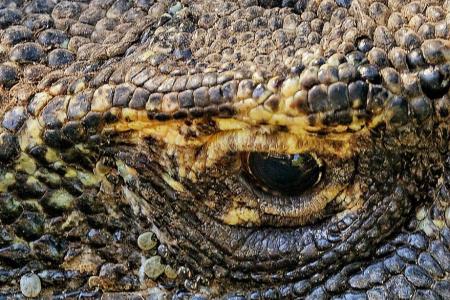Komodo dragon bite can't keep this photographer down
S'porean was on Indonesia's Komodo Island to take photos of the carnivorous lizards when one bit him
Just two weeks after being bitten by a Komodo dragon, Mr Loh Lee Aik was already playing table tennis and travelling to Indonesia and Malaysia.
The 68-year-old freelance photographer said: "I am always on the move. Even my friends and family do not know where I am sometimes."
Mr Loh, who was born in Taiping, Perak, became a Singaporean when he was 35.
He was on a solo photography trip earlier this month to the Flores and Komodo islands in Indonesia when he was bitten.
Though a frequent visitor to the country, it was his first time to those islands. He stayed with the locals on Komodo Island.
Mr Loh told The New Paper at a coffee shop near his home in Ang Mo Kio that he had been shown around Komodo National Park by a tour guide, but the well-fed and lazy lizards did not give him the kind of photos he had hoped to take.
In fact, he had envisioned a photograph of a reflection of his image on a Komodo dragon's eye.
He said: "The photos looked as though I could have gotten them from anywhere, even at the zoo."
Mr Loh later went out on his own to take pictures of the scenery from a hill close to Komodo Village.
Having read up extensively on Komodo dragons, he was wary of the carnivorous lizards that were all over the island, but the short grass made him feel confident of being able to spot one before it got too close.
While he was resting on a rock and using his phone, a young Komodo dragon sneaked up on him and bit his left calf.
"I gave a loud shout when I got bitten and a lot of blood started to spurt from the wound," he said.
"It took less than a second and by the time I turned around, I could only see its shadow running away."
He ran about 200m downhill back to the village, and when he got close enough, he shouted for help.
There were no doctors, so the village midwife attended to Mr Loh's wound, disinfecting it before stitching it up.
Komodo dragons have venom glands which are loaded with toxins that lower blood pressure, cause massive bleeding, prevent clotting and induce shock.
He showed TNP his scar, adding that though the wound was not too deep, it still required 43 stitches.
He was then rushed by boat to Siloam Hospitals Labuan Bajo, on Flores Island, and arrived two hours later.
"I feel grateful that the doctors did a good job," said Mr Loh. "There has been no sign of pus or gangrene..."
He was discharged three days later and was back in Singapore on May 8.
His family only found out about his condition through the news media.
The incident was covered by local media as well aspublications in Singapore.
Said Mr Loh: "I was surprised that such a small incident could get so much attention."
He is unfazed by the incident, making light of it by saying he would like to tattoo a Komodo dragon on the scars.
He even plans to go back to Komodo Island.
Most dangerous when hungry
Komodo dragons are usually not aggressive unless hungry.
"Food is the number one trigger. If they are not hungry, they will not bite just to bite," said Dr Bryan Fry, an expert on Komodo dragons and venom from the University of Queensland.
And contrary to popular belief, Komodo dragons are not "dirty mouthed".
Rather than the widely believed bacteria and pathogens that cause life-threatening infections in the prey, Komodo dragons use a combination of sharp serrated teeth and venom to inflict maximum physical damage.
The venom prevents blood from clotting and lowers blood pressure, causing the victim to go to into shock.
Dr Fry said: "The bite to his leg was a classic attack intended to cripple...making victims vulnerable to further attacks."
Ms Shirley Tee, course manager for the diploma in hospitality and tourism in Nanyang Polytechnic, said that tourists who are on eco-tours or visiting areas with wildlife should be aware of the surroundings and maintain a safe distance from wildlife.
She also encouraged them to purchase travel insurance, and seek help from locals and get medical treatment immediately when in danger or hurt.
Get The New Paper on your phone with the free TNP app. Download from the Apple App Store or Google Play Store now





